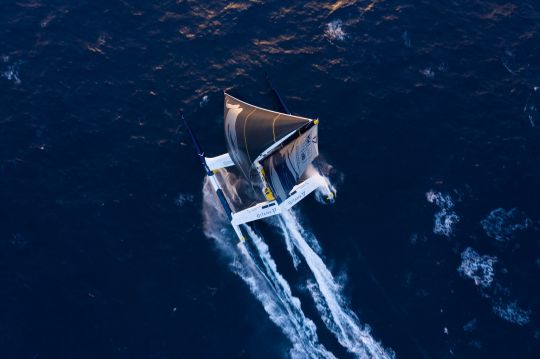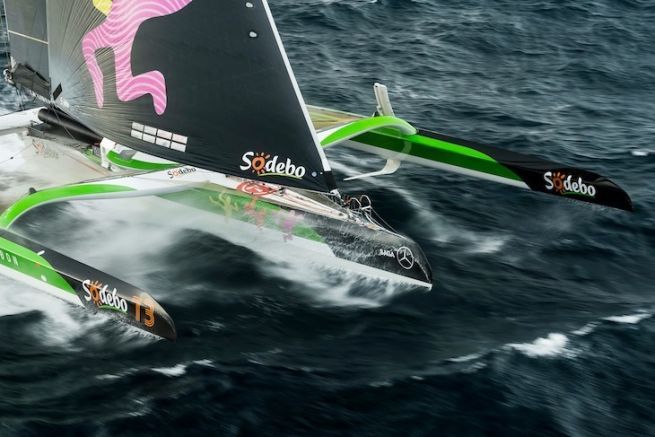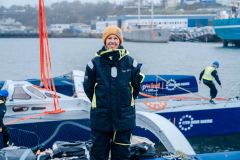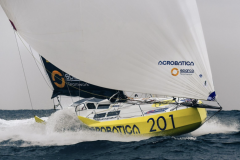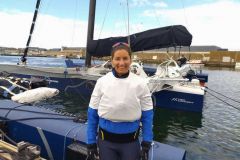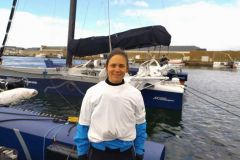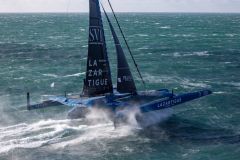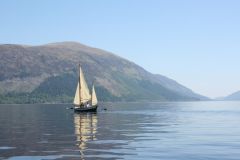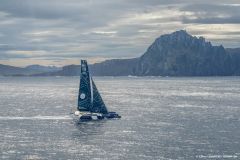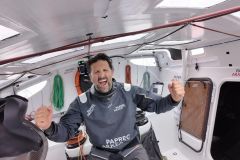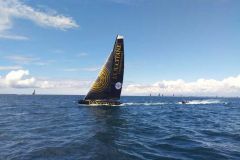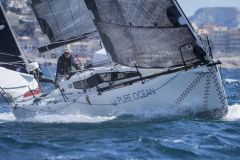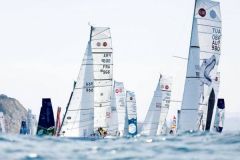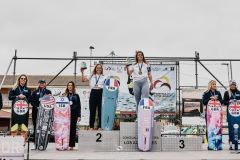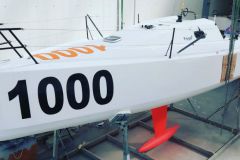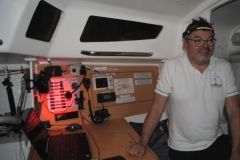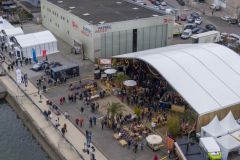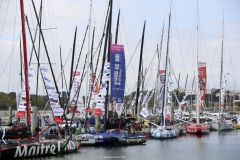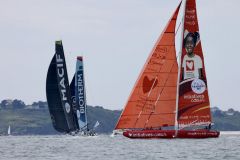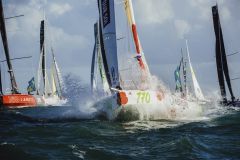A French particularity, ocean racing is mainly raced solo. From the Mini 6.50 to the Ultim flying trimarans, sailors compete alone on their machines. The Anglo-Saxons look with wide eyes at these Frenchmen, a little crazy, who set out on the oceans with these sailboats with disproportionate sail surfaces, all alone against the elements. Single-handed ocean racing is very well developed in France with many distinct classes allowing sailors to progress by changing support.
Class Mini
The Mini 6.50 was born in 1977, the class was born in 1994. It gathers the smallest ocean racing yachts, with a length of only 6.50 m. These small walnut hulls take the start every two years - in odd years - of their favorite race, the Mini Transat, which starts in France, often with a stopover in Spain, and then a crossing of the Atlantic towards the Caribbean. In 2001, the solo sailors won Brazil.
In addition to this single-handed transatlantic race, many races allow skippers to accumulate miles throughout the season, allowing them to qualify for the big transatlantic race.
With relatively low operating budgets compared to other classes, the Mini Class attracts many sailors, mostly amateurs. It has also seen the birth of great sailors, many of whom started in Mini 6.50.
In 2020, the class counted 1013 boats - prototypes or production boats - from various yards (IDB Marine, Structures...). Proof of the success of the Mini 6.50!
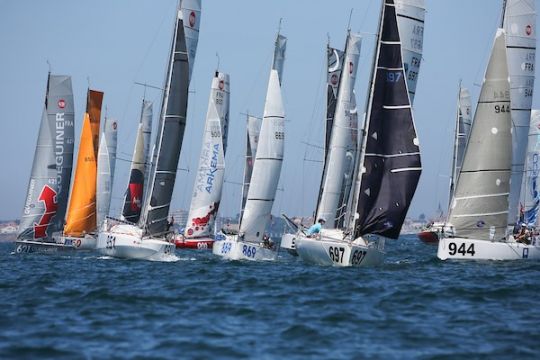
Figaro Bénéteau
In 1990, the Figaro Bénéteau Class was born, bringing together one-design sailboats of about ten meters. The Figaro 1 was designed by the architects Berret and Finot. It was followed by the Figaro 2 and since 2017, the Figaro 3, designed by VPLP, equipped with foils.
The Figaro Bénéteau are one-design boats, which allow them to race on equal terms. For years, the best sailors in the world have been competing against each other.
Throughout the year, the sailors compete in several events to try to win the title of French Elite Ocean Racing Champion.
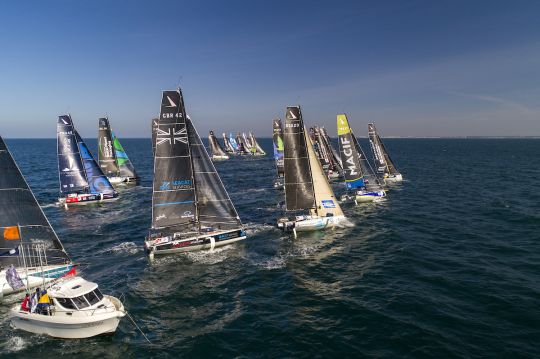
Class40
The Class40 is, like the Mini Class, for professionals and amateurs. The Class40 is a 40-foot monohull yacht designed for racing and cruising, whose construction is governed by strict rules of measurement, allowing a reasonable operating budget.
The class was officially born in 2005 and 25 competitors took the start of the Route du Rhum, the highlight of their racing program. More than 200 yachts have been built, with new designs giving way to bulky hulls with bows.
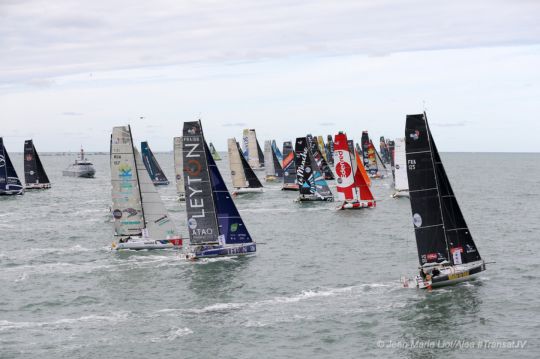
IMOCA
The IMOCA Class was created in 1991 and brings together fast and robust 60-foot (18.28 m) monohulls, capable of tackling the worst conditions, particularly in their flagship race, the Vendée Globe. Since 2018, a second round-the-world race has been added to the race program, The Ocean Race, which will be sailed with a crew.
While the construction of the boats must comply with the rules of measurement, the IMOCA class is one of development and innovation. Thus, the latest boats are now equipped with foils, which allow them to "fly" on the water and happily exceed 30 knots.

Ocean Fifty (ex-Multi50)
The Ocean Fifty Class brings together "accessible" multihulls of 50 feet in length and a maximum beam of 15.24 m. If the gauge which governs them is quite strict - to allow budget control - it does not prohibit certain innovations in architecture or construction.
Thus, since 2016, the class has evolved a lot and is essentially composed of high-performance trimarans, having decided to exclude the boats that no longer had anything to do with it. Most of them are equipped with foils.
Today, the class has 7 boats (including one for sale) and hopes to have up to 12 skippers. It has also just unveiled a brand new race program, composed of offshore sailing and coastal courses, to introduce the general public to these sea-going machines.
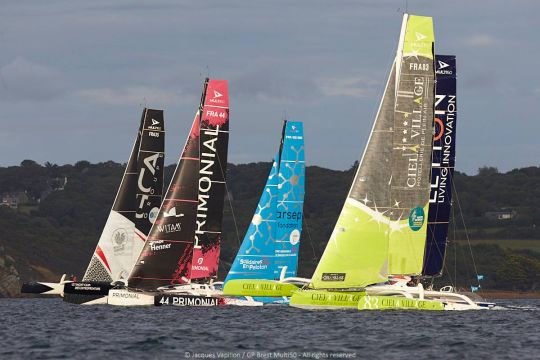
Final
The Ultime 32/23 class is reserved for elite sailors. There are only a few of them who can sail on these large ocean racing trimarans, which were created for the 2010 Route du Rhum. Today, the fleet is composed of 5 boats and two boats are under construction, the Maxi Banque Populaire XI and the trimaran of François Gabart (ex Macif ex-sponsor of the navigator).
These flying boats are real jewels of technology and take part in all the major offshore races. But they are especially designed to beat records such as the Jules Verne Trophy (crewed round-the-world race) or the solo round-the-world race.
